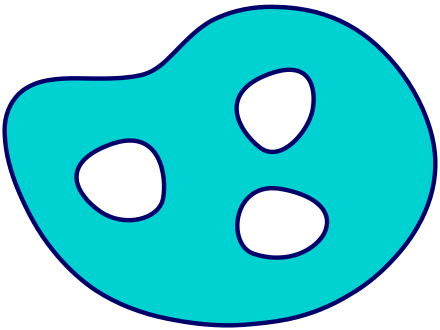-
Boundary (topology)
In topology and mathematics in general, the boundary of a subset S of a topological space X is the set of points in the closure of S not belonging to the interior of S. An element of the boundary of S is called a boundary point of S. The term boundary operation refers to finding or taking the boundary of a set. Notations used for boundary of a set S include {\displaystyle \operatorname {bd} (S),\operatorname {fr} (S),}{\displaystyle \operatorname {bd} (S),\operatorname {fr} (S),} and {\displaystyle \partial S}\partial S. Some authors (for example Willard, in General Topology) use the term frontier instead of boundary in an attempt to avoid confusion with a different definition used in algebraic topology and the theory of manifolds. Despite widespread acceptance of the meaning of the terms boundary and frontier, they have sometimes been used to refer to other sets. For example, Metric Spaces by E. T. Copson uses the term boundary to refer to Hausdorff’s border, which is defined as the intersection of a set with its boundary.[1] Hausdorff also introduced the term residue, which is defined as the intersection of a set with the closure of the border of its complement.[2]
A connected component of the boundary of S is called a boundary component of S.

A set (in light blue) and its boundary (in dark blue).
Contents
1 Common definitions
2 Properties
3 Examples
3.1 Characterizations and general examples
3.2 Concrete examples
3.3 Boundary of an open ball vs. its surrounding sphere
4 Boundary of a boundary
5 See also -
相关阅读:
Linux: 特殊文件名文件删除
MongoShake迁移mongodb数据库
MySQL查询的执行流程
YOLO改进系列之注意力机制(GAM Attention模型介绍)
【氮化镓】液态Ga在GaN(0001)和(0001̅)表面上的三维有序排列随温度的变化
「动态规划学习心得」正则表达式匹配
NaYF_4:Yb,Er上转换荧光纳米颗粒
MyBatis介绍
Activity、Fragment之间的传值
《C++避坑神器·二十》C++智能指针简单使用
- 原文地址:https://blog.csdn.net/qq_66485519/article/details/128210149